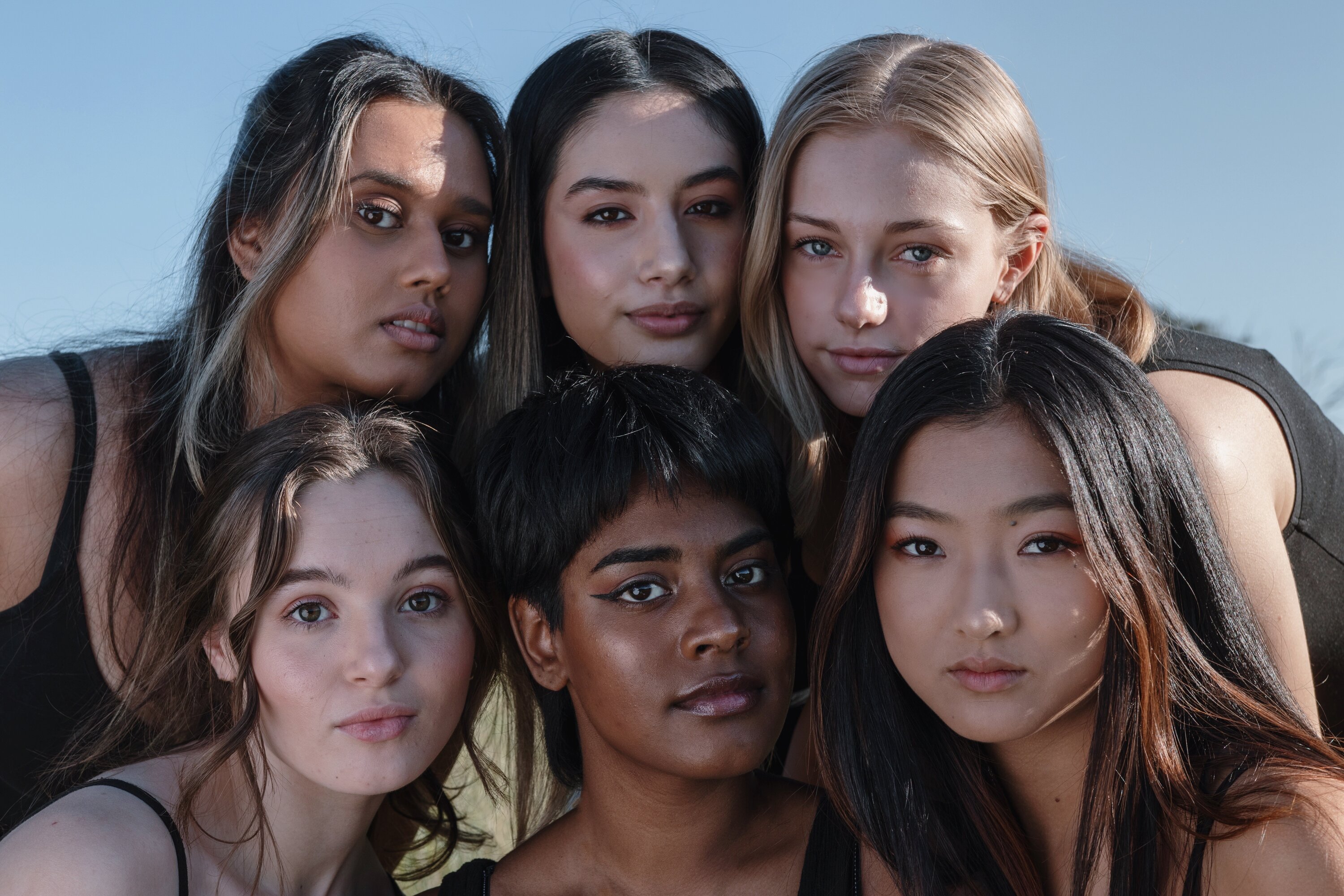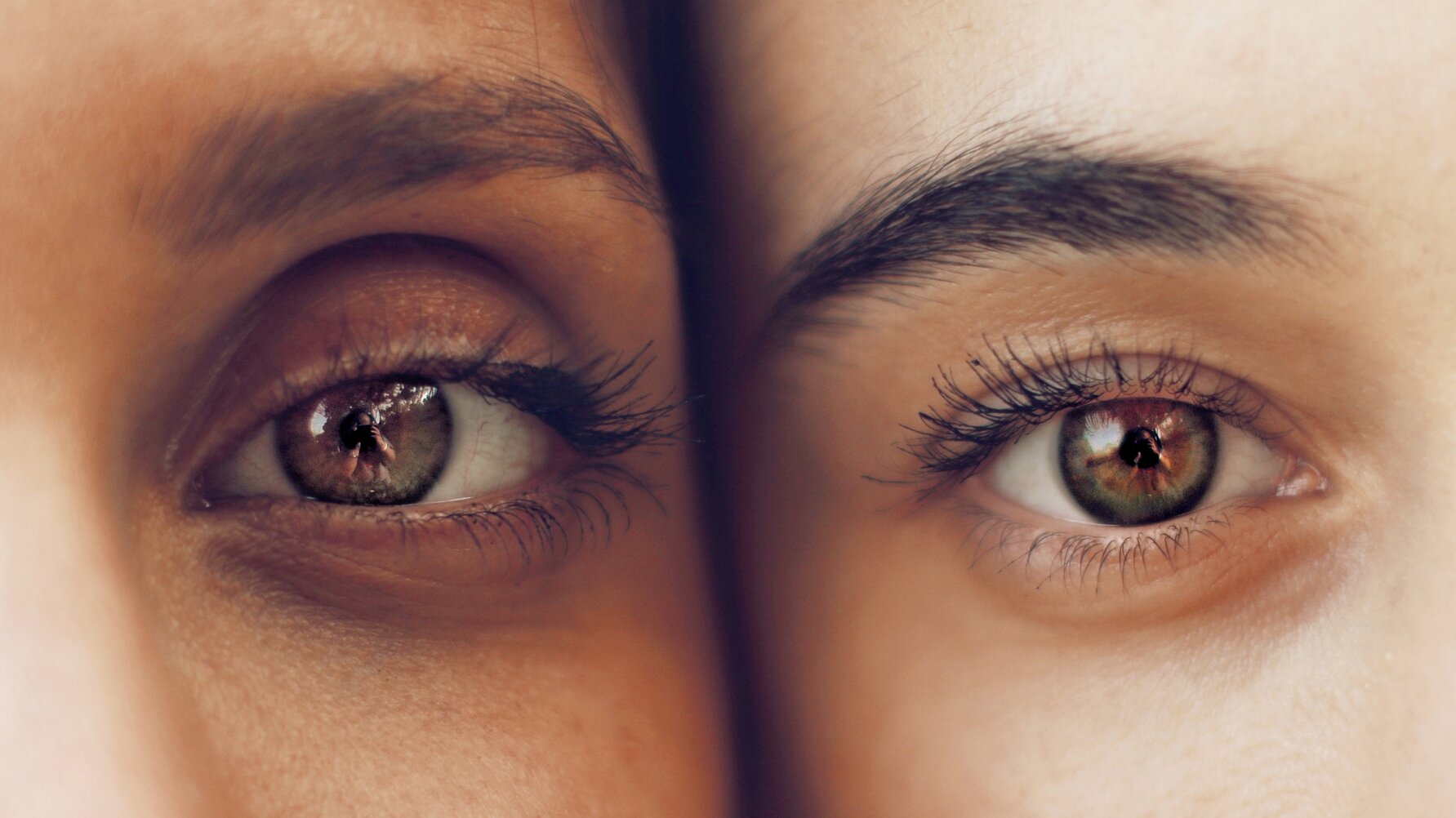 What’s the Difference Between Collagen Peptides and Hydrolyzed Collagen?
What’s the Difference Between Collagen Peptides and Hydrolyzed Collagen?
Does Ethnicity Affect How Our Skin Ages?

When we think of skin types, a few classifications come to mind. Not only should you tailor your skincare routine to your skin type – like dry, normal, combination, or oily – but also to your skin ethnicity type.
The 4 Skin Types
There are four broad groups of skin types, which can apply to any ethnicity. Explore how skin type can apply to the health of our skin.
Normal Skin
Normal skin is well-balanced and not very sensitive. It is not overly prone to acne, and pores are often small, giving a smoother look to the surface of the skin.
A great skincare routine can help your normal skin stay healthy, so ensure that you are protecting your skin’s barrier function with moisture and ceramides.
Dry Skin
Dry skin does not produce much sebum [1] and can appear flaky and uneven due to its low moisture content. Wrinkles form more quickly on dry skin than on oilier skin types and are more likely to become itchy or irritated.
Your dry skin routine should include a hydrating and soothing cleanser, a ceramide moisturizer, and exclusion of ingredients like alcohol, fragrances, and oils in the products you use.
Combination Skin
Combination skin can be difficult to care for as distinct areas of the face may require different products. Typically, combination skin has an oily “T-zone” (forehead, nose, and chin) and dry/normal texture on the cheeks. These zones may fluctuate based on other factors like seasons or hormones.
To care for your combination skin, use oil-busting products like salicylic acid on your T-zone and moisturizing ingredients on drier areas. Use ingredients like ceramides, hyaluronic acid, and niacinamide to protect your barrier function.
Oily Skin
Oily skin produces the most sebum, which gives a shiny appearance to the face and can lead to more acne. Those with oily skin tend to have the most prominent pores, making them more susceptible to blackheads and whiteheads. When cared for correctly, oily skin has some advantages, like retaining more moisture [1] and decreased wrinkle development.
The best skin care for oily skin involves a gentle cleanser and lightweight products. Salicylic acid can be helpful to unclog pores and attenuate sebum production.
Sensitive Skin
Sensitive skin [2] is not quite a skin type but more of a descriptor since you can have dry-sensitive or dry-oily skin. Sensitive skin is easily irritated by skin or hair care ingredients, environmental stressors, or friction. Paying attention to what products produce skin reactions can help you narrow down exactly what is causing the problem so you can avoid it.
Your best bet is to opt for non-comedogenic (oil-free) products and those without dyes or fragrances. To support your sensitive skin, consider using gentle face wash and moisturizers and avoiding long, hot, showers. Colloidal oatmeal is recommended to help sensitive skin recover from any irritation or rash.

Skin Types by Ethnicity
Researchers classify skin ethnicity into one of 4 categories; caucasian, asian, hispanic/latino, and black, listed from lightest to darkest. Skin types often vary based on several factors for different ethnic groups like “. . . transepidermal water loss (TEWL) [3], water content (WC), corneocyte variability, blood vessel reactivity, elastic recovery/extensibility, pH gradient, lipid content, surface microflora, microscopic evaluation of mast cell granules, and confocal microscopy.”
All of this sounds very complicated, but these factors translate to differences in your skin’s needs.
Age-Related Changes in the Skin
Aging is a complex process, influenced by many variables, and there are many structural and functional differences among different racial and ethnic skin types. These factors produce unique aging processes and altered skin structure that vary based on ethnic origin.
Photoaging
Darker skin has more melanin content compared to lightly pigmented skin. Your skin’s melanocytes produce melanin to absorb harmful UV rays and protect the skin from oxidative damage. Melanin is a pigment that gives darker skin tones their color. Studies estimate that the melanin content of black skin provides the equivalent of SPF 13.4 [1] protection when compared to white skin. “. . . manifestations of aging are less severe and typically occur 10 to 20 years later than those of age-matched white counterparts.”
Since white skin is less protected from the sun’s rays, it’s more vulnerable to photoaging, causing sun spots, collagen degradation, and wrinkles. Individuals with lighter skin are also more prone to skin cancer.
Sagging Skin
Of all ethnic skin types, white skin begins to relax more quickly than other skin colors. Since white skin is more susceptible to photoaging and the destruction of structural skin proteins, the fat underlying the skin migrates down the face and into the neck, giving the appearance of jowls and sagging facial skin.
Asian skin sags mainly in the mid-face under the eyes, with less fat migration farther down the face.
Black and Hispanic skin experiences a thickening of tissue in the cheek area, making the wrinkles around the mouth (nasolabial folds) more pronounced. Similarly, the eyebrows and upper lids begin to droop in these ethnic groups compared to white skin.
Black skin has one unique characteristic: a thicker concentration of fibroblasts and a more compact dermis, which is found under the outer layer of the skin. This means black skin can retain its structural integrity and plump appearance better than other skin colors.
Uneven Skin Tone
Though skin of color is less affected by UV rays because it has more melanin, it is more susceptible to skin mottling, thickening, and uneven skin color and texture. In Asian and Hispanic skin, there is a high incidence of pigmented or sun spots. Dermatologists use the development of these spots to assess the skin’s age in these populations.
Darkly pigmented skin is subject to thickening [1] and the development of dermatosis papulosa nigra, which are dark, raised, spots on the skin that have a similar appearance to moles. This is believed to be partially hereditary, but using products like skin-lightening creams may increase the presence of these spots. Thickening of the epidermis with age can also produce an uneven appearance and texture, producing extra thick spots called seborrheic keratoses.
Wrinkling and Volume Loss
Darker skin is much thicker, so skin of color is less susceptible to volume loss in the younger years. Black skin has more tightly packed skin cell layers and a higher fat content compared to lighter skin. This thickness contributes to decreased loss of facial elements like the structural proteins and fat underlying the skin, making it look plump. This translates to fewer fine lines, wrinkles, and a less hollowed look of the face.
Skin Health
Trans-epidermal water loss (TEWL) determines how well your skin can retain moisture, keeping it hydrated and protected. Studies show that Black skin has the highest water loss [3], leading to dry and potentially scaly skin. When dead skin cells pile up like this, it can block pores and cause acne, or make the skin look dull. Asian and Hispanic skin has higher water loss than Caucasian, but still less than Black skin.
Your skin has a barrier that protects it from the outside world. This barrier is composed of sebum, ceramides, lipids, microflora, and retained moisture. Barrier function [4] is directly correlated to the look and sensitivity of the skin. Lighter skin types have higher concentrations of ceramides, but barrier function is lower when coming into contact with a mechanical or chemical challenge like a scrape or exposure to acids. For this reason, lighter skin stays more moisturized due to ceramides, but darker skin is more resilient to stressors.
Hormonal Factors
For women, estrogen production declines as we age. This is particularly pronounced in post-menopausal women. As estrogen production dramatically declines, the skin becomes drier, more wrinkled, less full, wound healing is slowed, and there is a higher chance of developing pigmented spots.
Though men have more testosterone than women, testosterone plays a role in skin health in all genders. Testosterone induces more sebum production, potentially blocking pores and causing acne. Specifically, testosterone is associated with deep cystic acne [5].
Cortisol is your stress hormone and can also affect your skin, often producing acne [6]. Cortisol is released due to stress, lack of sleep, and poor diet.
Environmental Factors in Skin Adaptations
Many factors affect the health and appearance of the skin, and they can come from our environment. One such factor is where you live. Living closer to the equator makes you more likely to experience sun damage and subsequent skin aging. Living in a highly polluted city can also produce similar aging results, as it oxidizes and ages your skin cells.

Lifestyle Choices
Your choices can affect your skin from birth. Choosing to wear sunscreen, choosing to diligently wash your face every day, smoking, sleeping on your side rather than on your back, sleeping with a humidifier, and much more. Aging is an inevitable reality, but the earlier you begin practices that protect your skin, the longer you’ll be able to avoid the features of aging.
Skincare Practices for Different Ethnic Skin Types
It is useful for any and all skin types to use interventions like collagen supplements, ceramide moisturizers, sunscreen, and retinol products, but different ethnicities and skin types should focus on specific concerns first.
Caucasian Skin
In Caucasians, facial aging is principally due to the sun, given the low amount of melanin in the skin. White skin tends to age the fastest across the four skin groups.
To stave off premature signs of aging, lighter skin tones should prioritize using a strong sunscreen at all times and beginning the use of retinol as early as possible, particularly on the forehead and around the eyes. Taking a collagen supplement will help to slow the degradation of underlying structural proteins.
Asian Skin
Asian skin often has poor barrier function and is increasingly vulnerable to developing pigmented age spots. Asian skin typically begins to sag first under the eyes.
Skincare for Asian groups should focus on maintaining barrier function with a light ceramide moisturizer, limiting strong chemical exfoliation, using vitamin C to help with hyperpigmentation, and finding a good under-eye product with retinol in it.

Hispanic Skin
Hispanic skin is prone to discoloration in the form of mottling, jowl formation, higher sebum production, and has moderate barrier function.
To care for Hispanic skin, employ a light sunscreen to decrease UV damage, vitamin C to help with mottling, salicylic acid to help with sebum, and retinol products to help reduce the laxity of the skin attributed to jowls.
Black Skin
The high amount of melanin makes darkly pigmented skin more resilient to the sun, but more susceptible to thickening and development of small, dark bumps. Black skin is thicker and more compact than lighter skin tones, but experiences far more water loss.
A good skincare routine for African American skin involves lots of hydration, regular exfoliation, ceramides, and a light sunscreen.
5 Tips to Slow Down the Signs of Aging
Always use sun protection
One of the most crucial steps in combating signs of aging is to consistently use sun protection. Sun exposure is a primary cause of premature aging, including wrinkles and sunspots. By applying a broad-spectrum sunscreen with an SPF of at least 30 every day, even on cloudy days, you shield your skin from harmful UV rays. This not only helps prevent new signs of aging but also protects against skin cancer. For added protection, wearing hats and seeking shade during peak sun hours can further minimize sun damage.
Use a retinol product and vitamin C
Incorporating a retinol product and vitamin C into your skincare routine can significantly slow down aging signs. Retinol, a derivative of vitamin A, is renowned for its ability to boost collagen production and accelerate skin cell turnover, which helps reduce fine lines and wrinkles. Vitamin C, a powerful antioxidant, aids in protecting the skin from free radical damage and enhances brightness by reducing dark spots and uneven skin tone. Using these products at night can maximize their benefits, as retinol can make the skin more sensitive to sunlight.
Keep your skin hydrated with a ceramide moisturizer
Maintaining skin hydration is essential in the fight against aging. A ceramide moisturizer is particularly effective as ceramides are lipid molecules found naturally in the skin that help retain moisture and maintain the skin barrier. As we age, ceramide levels decrease, leading to drier and more wrinkled skin. By using a ceramide-rich moisturizer, you can help replenish these essential lipids, keeping your skin hydrated, plump, and less prone to aging signs.
Take a collagen supplement
Collagen, the most abundant protein in our body, is vital for maintaining skin elasticity and firmness. As we age, our body’s collagen production declines, leading to sagging skin and wrinkles. Taking a collagen supplement can help. These supplements, usually derived from marine or bovine sources, can provide the amino acids needed to support the body’s natural collagen production. This internal skincare approach complements topical treatments, working to slow down aging from the inside out.
Consume a healthy diet
Lastly, a healthy diet plays a fundamental role in maintaining youthful skin. Foods rich in antioxidants, such as fruits, vegetables, nuts, and seeds, can protect the skin from oxidative stress, which accelerates aging. Omega-3 fatty acids, found in fish and flaxseeds, are excellent for maintaining skin health, as they help keep the skin moisturized and reduce inflammation. A balanced diet that includes these nutrients, along with adequate hydration, can profoundly impact the skin’s appearance and its aging process.
There are certain predispositions for acne, eczema/dry skin, or premature aging that you can inherit from your parents, but most skin conditions are not genetically based.
As you age, adding in retinol products, moisturizers, sunscreen, and taking collagen will help your aging skin to appear less wrinkled.
Sun damage, smoking, and pollution can all take a toll on your skin, increasing the appearance of aging.
Yes! Focusing on your health, caring for your skin, and wearing sun protection will help decrease the signs of premature aging.
Collagenhealth.com writers follow rigorous sourcing guidelines and cite only trustworthy sources of information, including peer-reviewed journals, court records, academic organizations, highly regarded nonprofit organizations, government reports and interviews with qualified experts.
-
Neelam A. Vashi, MD; Mayra Buainain De Castro Maymone, MD, MSC; Roopal V. Kundu, MDb. (2016). Aging Differences in Ethnic Skin.
-
Jon Johnson. (2023). Sensitive skin: Home remedies and prevention.
-
Naissan O. Wesley; Howard I. Maibach. (2012). Racial (Ethnic) Differences in Skin Properties.
-
Rawlings AV. (2006). Ethnic skin types: are there differences in skin structure and function?
-
C. C. Zouboulis; W.-C. Chen; M. J. Thornton; K. Qin; R. Rosenfield. (2007). Sexual Hormones in Human Skin.
-
Nives Pondeljak MD; Liborija Lugović-Mihić MD, PhD. (2020). Stress-induced Interaction of Skin Immune Cells, Hormones, and Neurotransmitters.
All content on Collagenandhealth.com is thoroughly examined and validated by board-certified physicians to guarantee its precision and reliability.
Our reviewers possess specialized expertise in the field of collagen supplements and their implications for health and wellness.
Through the guidance of trusted reviewers, we ensure that the information provided is independent and informative.
At Collagen and Health, we prioritize your well-being and trust. Our commitment to your health journey is rooted in:
Every article is grounded in scientific research, ensuring you receive factual and up-to-date knowledge.
Our team includes seasoned doctors with a deep understanding of collagen and its health benefits, who meticulously review each piece of content.
Our precise fact-checking process guarantees that the information we provide is both trustworthy and practical.
Choose Collagen and Health for reliable, expert-approved guidance on your journey to better health with collagen.
Learn more about us What’s the Difference Between Collagen Peptides and Hydrolyzed Collagen?
What’s the Difference Between Collagen Peptides and Hydrolyzed Collagen?
 Collagen Peptides: Support Your Skin the Nutritional Way
Collagen Peptides: Support Your Skin the Nutritional Way
 Does Ethnicity Affect How Our Skin Ages?
Does Ethnicity Affect How Our Skin Ages?
 Collagen Peptides for Hair Growth: Do They Really Work?
Collagen Peptides for Hair Growth: Do They Really Work?






